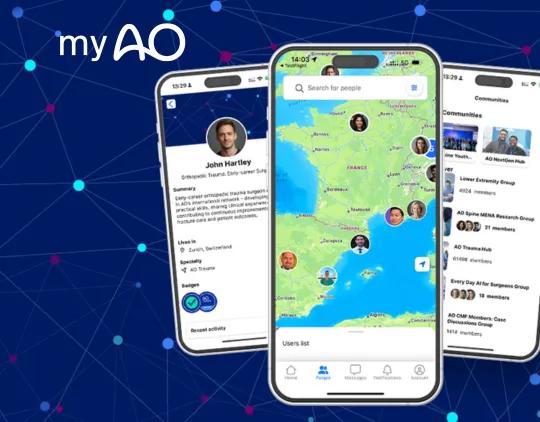Open reduction; screw and external fixator
1. Goals
The main goals of treatment of these fractures are:
- Anatomical reduction and restoration of the joint surface
- Avoidance of joint stiffness by early motion
- Uncomplicated healing
- Avoidance of malunion or nonunion
2. Preoperative planning
Depending on the age of the child, the following variations to the technique may be considered.
Smaller children, below 8 years of age:
- Proximal Schanz screw: 4.0/3.0mm
- Distal anchorage: either 4.0/2.5mm Schanz screw, or if not available, a 2.0 or 2.5 mm K-wire with a short thread
- Antirotation K-wire: 1.6 mm
- 4.0 mm rods (preferably carbon fiber, or stainless steel)
- Appropriately sized standard, or clip-on, clamps
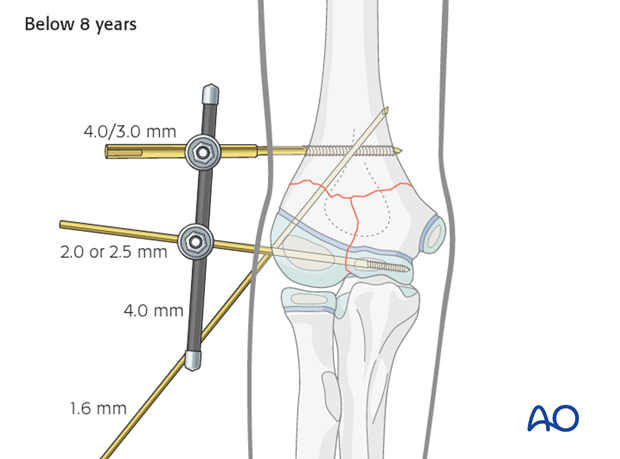
Children above 8 years of age:
- Lag screw and guide wire (if cannulated screw is used) for condylar reassembly
- Schanz screws: at least 4.0/3.0 mm, or sometimes 4.0 mm
- Antirotation K-wire: 2.0 mm
- 4.0 mm rods (preferably carbon fiber or stainless steel)
- Standard or clip-on clamps for 4.0 mm rods
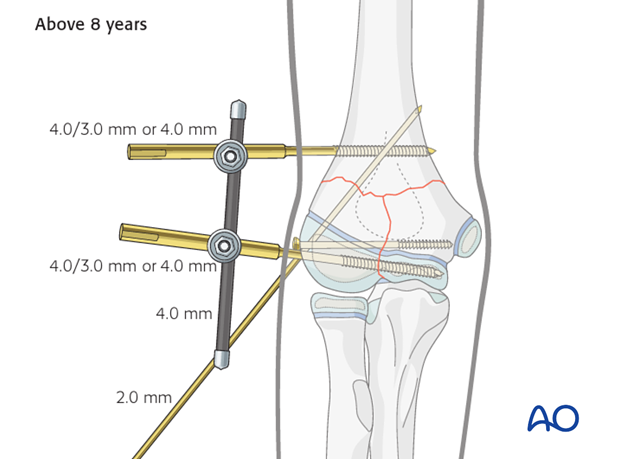
Anesthesia and positioning
General anesthesia is recommended and a sterile tourniquet should be available.
The patient should be placed lateral with the injured arm placed over a padded arm roll or a gutter support. Alternatively, a prone position may be used.
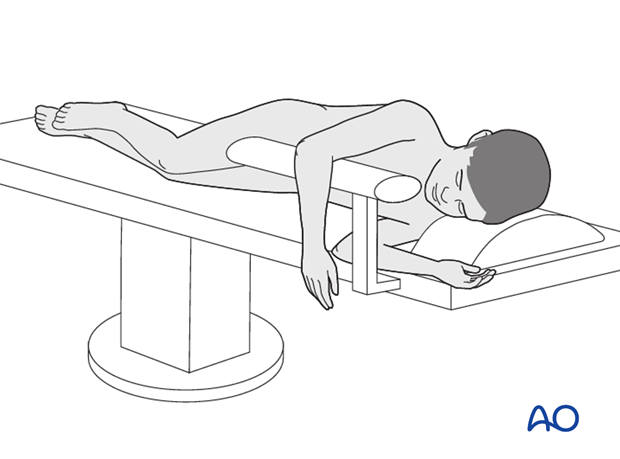
3. Approach
A posterior approach can be used. The triceps may be split or reflected laterally and medially. Olecranon osteotomy is rarely necessary.
Note: Some surgeons prefer a lateral approach as it allows sufficient visualization of the intraarticular component, although access is more limited.
Cleaning of the fracture site
The fracture is cleaned by removing blood clots, loose pieces of bone, and any interposed tissue.
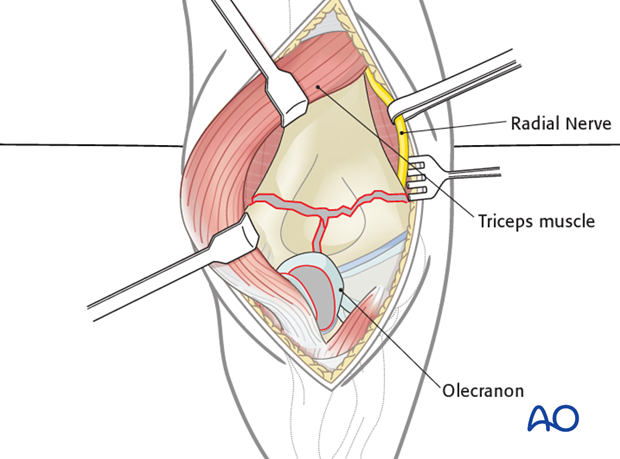
4. Reconstruction of the articular surface
Condylar reassembly
The articular fragments are reduced using pointed reduction forceps, a towel clamp, or with the help of two K-wires.
An anatomical reconstruction of the joint surface is mandatory.
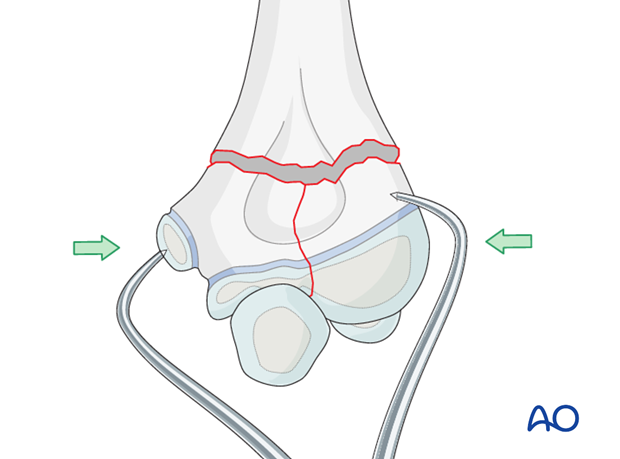
Definitive interfragmentary fixation
A lag screw is normally used to obtain interfragmentary compression of the articular fracture plane.
Note: The condylar mass in the younger child will be largely occupied by the distal Schanz screw. The lag screw normally used across the condylar mass may have to be omitted. In this case, the Schanz screw will function instead as a positioning screw.
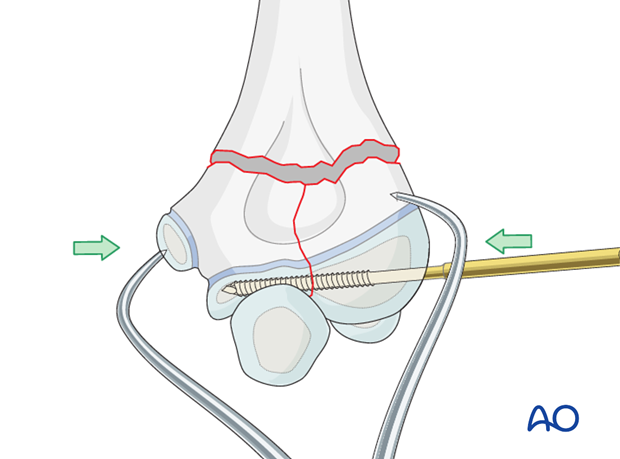
A partially or fully threaded screw can be used. If a fully threaded screw is used, it is necessary to overdrill the near fragment.
To achieve an optimal mechanical outcome, the physis can in be ignored in children who are approaching skeletal maturity.
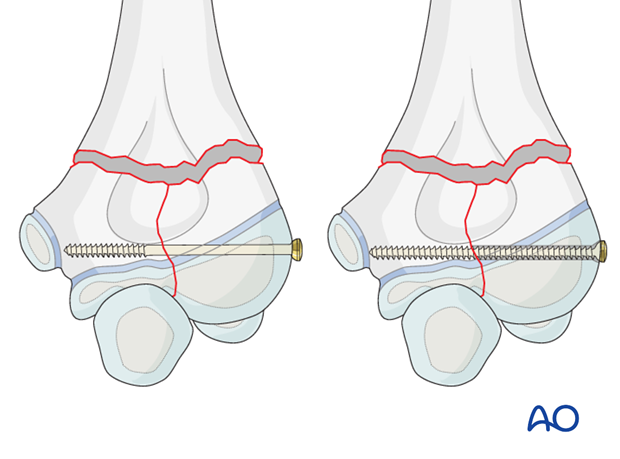
If cannulated lag screws are available, the two reduced fragments are temporarily fixed with a K-wire.
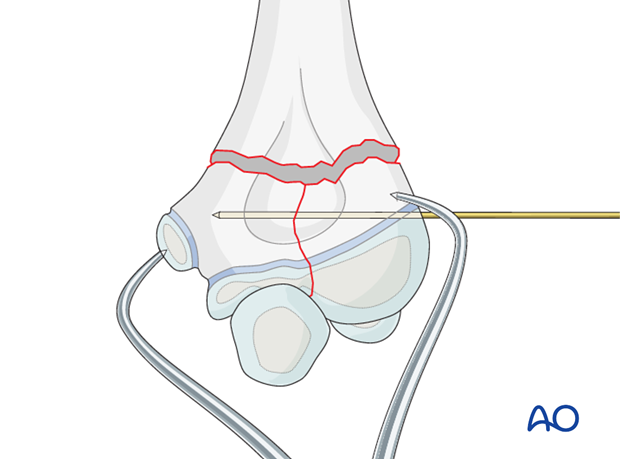
The guide wire for the cannulated screw is inserted through the center of the capitellum, parallel to the joint surface.
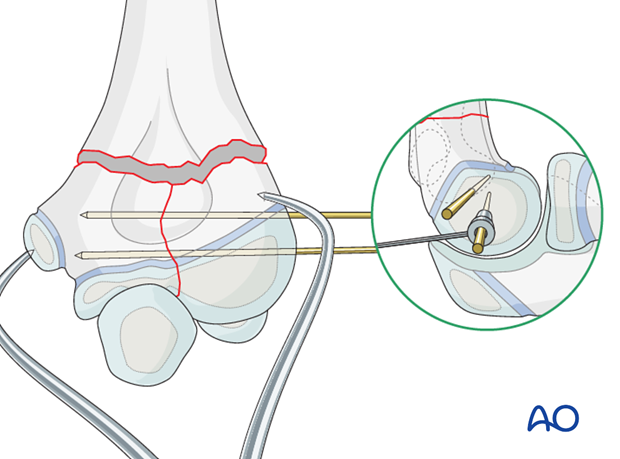
An appropriate screw, depending on the fragment size (3.0, 3.5, or 4.0 mm), is inserted and both wires are removed, unless the first K-wire is required for additional stability.
Note: Once the condylar mass has been reconstructed, the injury has been converted to a simple supracondylar fracture type.
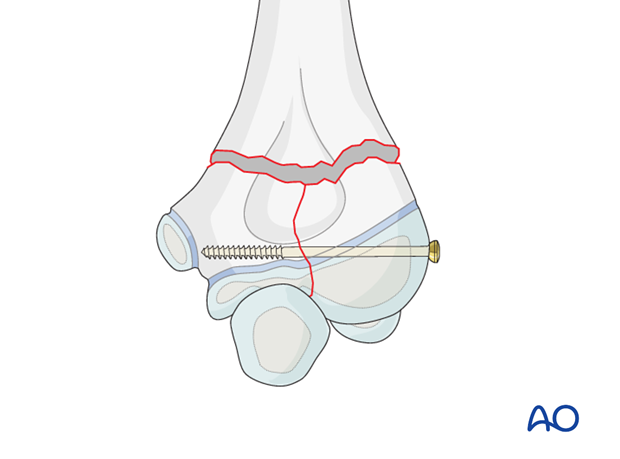
5. Condylar reattachment with external fixator
Distal Schanz screw insertion
A 4.0/3.0 or 4.0 mm Schanz screw is inserted into the condylar mass parallel to the joint (proximal or distal to the lag screw, depending on the fragment size).
The Schanz screw is inserted, from lateral to medial, approximately 2/3 of the condylar width. Excessive depth is to be avoided because of the vulnerability of the ulnar nerve.
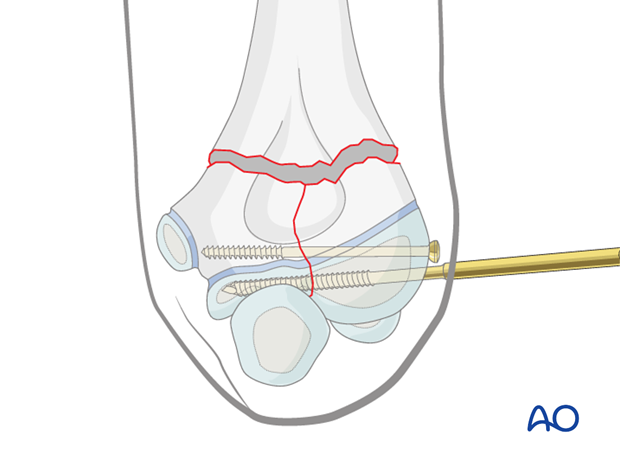
Proximal Schanz screw insertion
A second 3.0/4.0 or 4.0 mm Schanz screw is inserted approximately 3 cm above the supracondylar fracture plane and perpendicular to the long axis of the humeral shaft.
Note: Care should be taken not to damage the radial nerve.
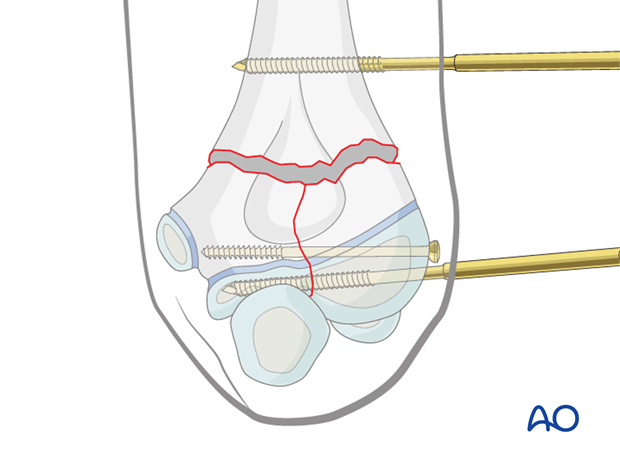
Reduction
Once both Schanz screws are well fixed, the clamps and the bar are applied to connect them.
Using the Schanz screws as joysticks, the fracture can be reduced anatomically under direct vision.
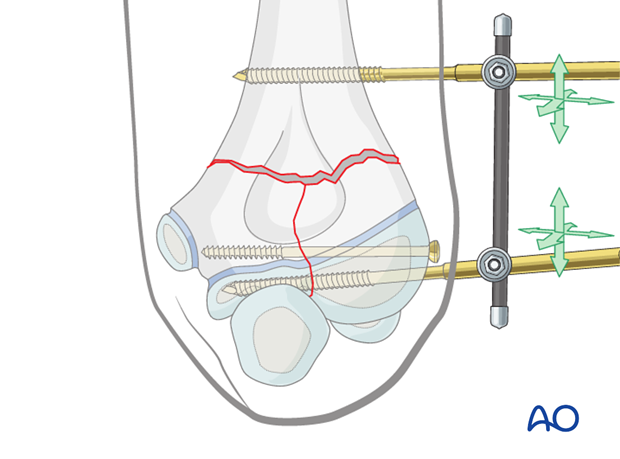
When anatomical reduction is achieved, the clamps are tightened.
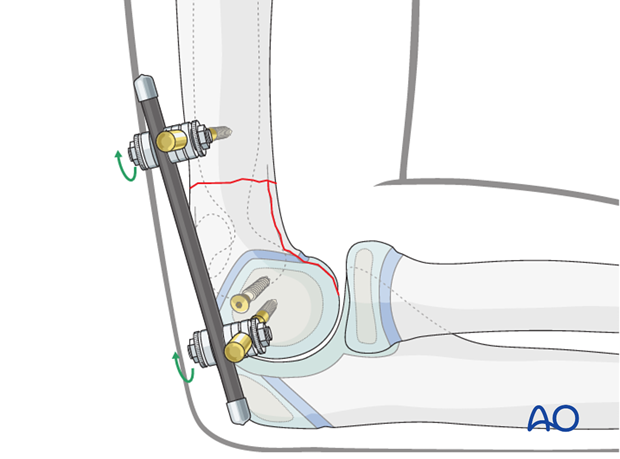
Antirotation K-wire
To prevent rotation at the fracture site, a K-wire is inserted from the distal lateral aspect, posterior to the distal Schanz screw, towards the proximal medial cortex of the humerus, ending anterior to the proximal screw.
This K-wire also functions as an antirotation device in the distal fragment, preventing its twisting around the axis of the distal Schanz screw.
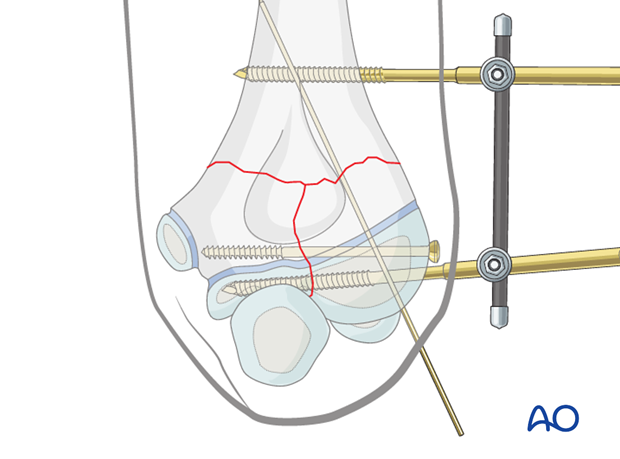
6. Aftercare
If the child remains for some hours/days in bed, the elbow should be elevated on pillows to reduce swelling and pain.
See also the additional material on postoperative infection and compartment syndrome.
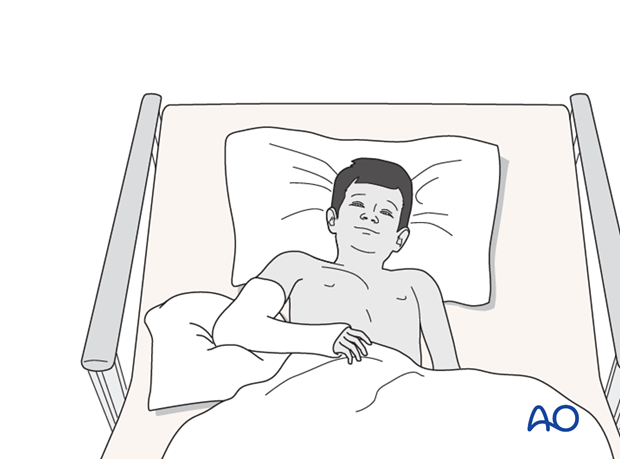
Note: Additional immobilization is not required when an external fixator has been used.
The postoperative protocol is as follows:
- Discharge from hospital according to local practice (1-3 days)
- First clinical and radiological follow-up, depending on the age of the child, 4-5 weeks postoperatively
- In most cases, at this first x-ray control, the fracture is consolidated and stable
- Physiotherapy is normally not indicated
Removal of external fixator
Removal of the external fixator should not be performed before good callus formation is observed.
External fixator removal can be undertaken in the fracture clinic without anesthesia (however, oral sedation is recommended).
